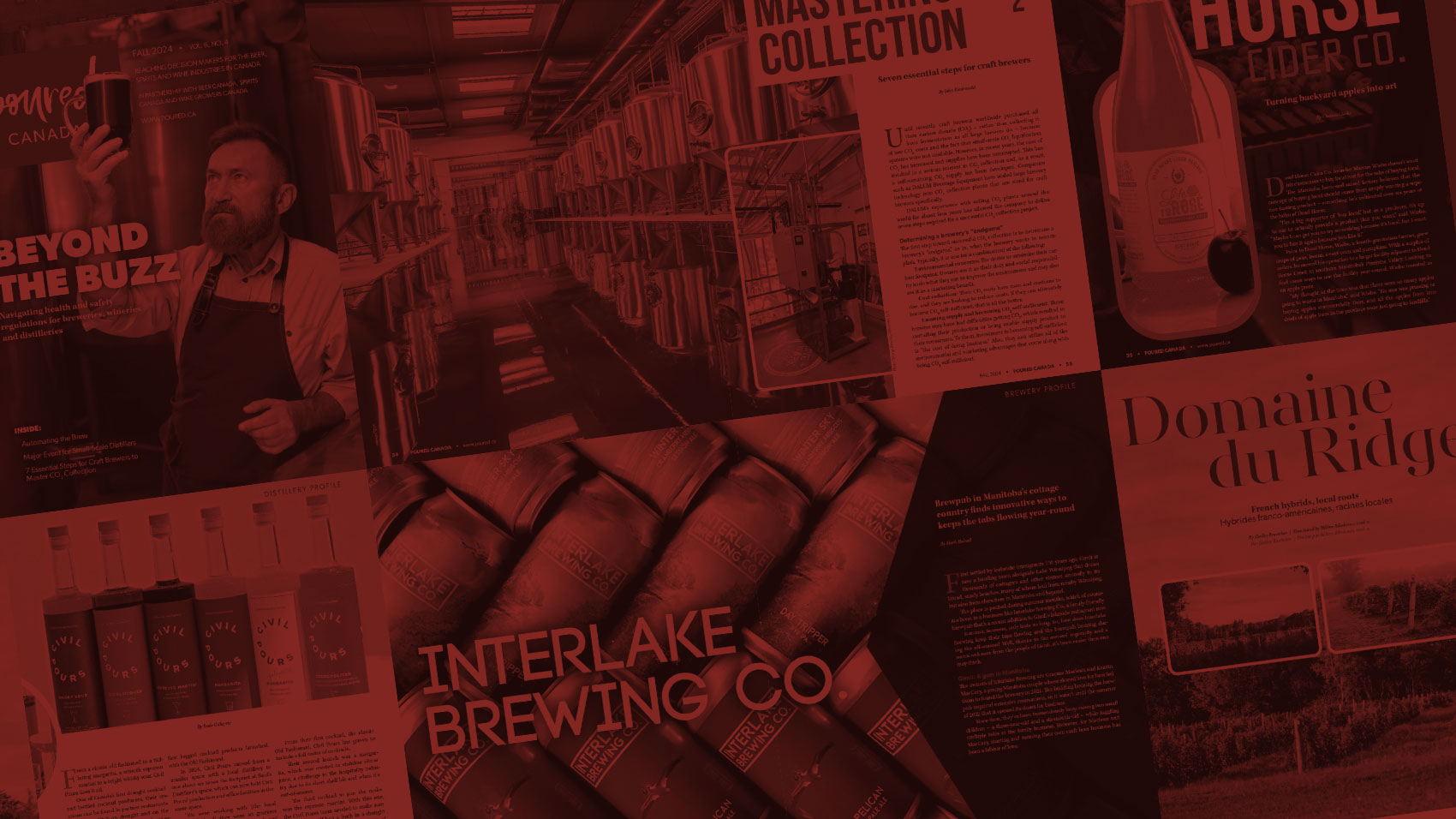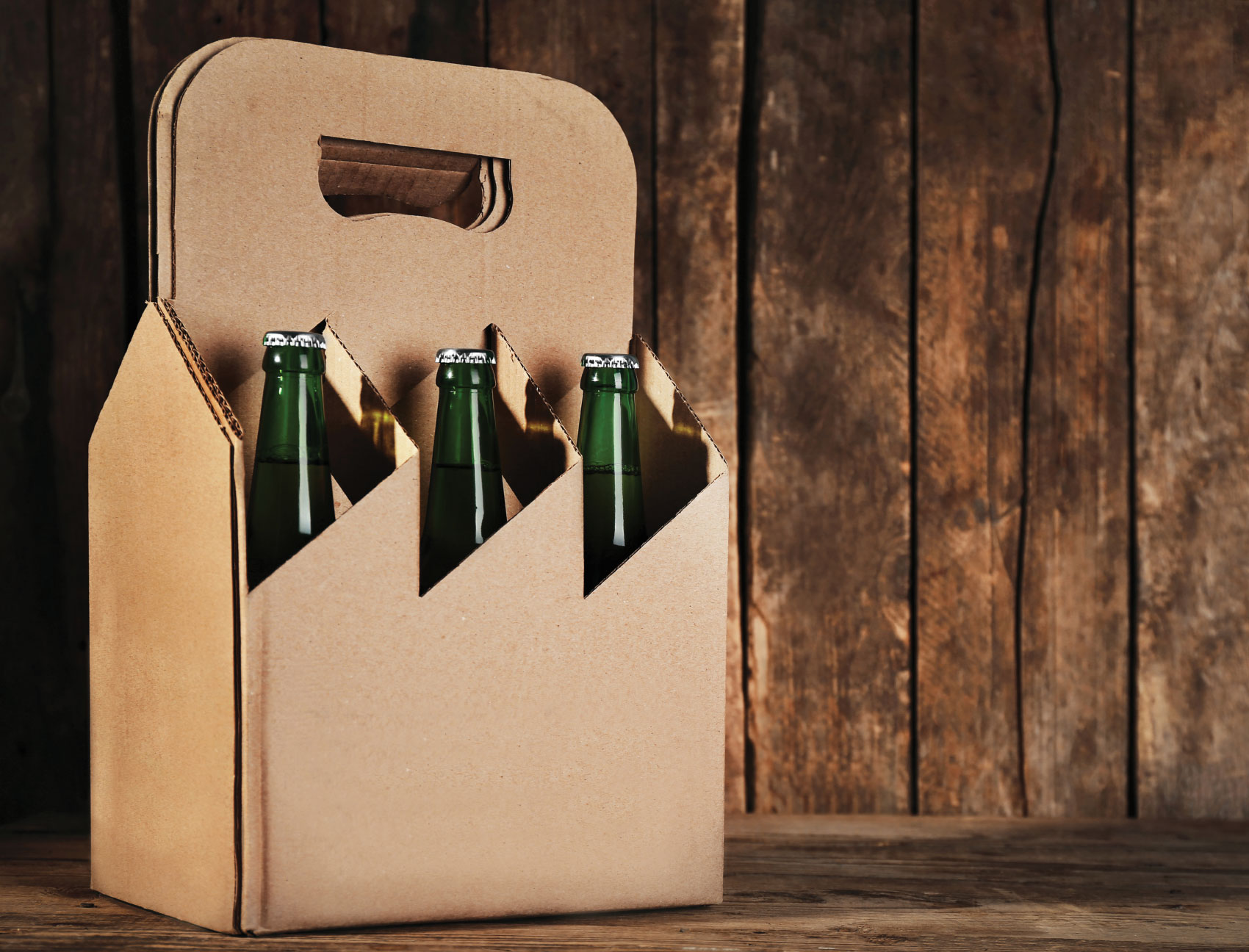Health and safety may not be the sexiest subject in the alcohol industry, but it impacts every process in a winery, brewery and distillery. With hundreds of new businesses in the beverage-alcohol sector popping up every year, it’s incredibly important for owners to understand the health and safety regulations that could make or break their business.
Kelly Mean, manager of prevention field services at WorkSafeBC and a former professional winemaker, understands how difficult navigating health and safety regulations can be for new businesses. “As someone with experience in both the alcohol industry and health and safety, I understand that navigating regulations can seem daunting at first. However, these guidelines are essential for keeping workers safe….”
Mean emphasizes that WorkSafeBC’s goal is to help employers keep workers safe by providing education and consultation, and by enforcing The Workers’ Compensation Act and Occupational Health and Safety Regulations.
Deciding who gets inspected and when
WorkSafeBC classifies breweries and wineries as moderate-risk facilities. This classification means that WorkSafeBC officers will check in occasionally, but not as frequently as they do with high-risk facilities like construction sites. WorkSafeBC Prevention Officers prioritize inspections based on data-driven risk assessments. They focus on sectors and employers where the risk of worker injury is highest.
Several factors influence these inspections, including the number of claims submitted by a facility, sector-wide claim numbers, the timing of the last inspection and concerns raised by workers, family members or the public. Even media reports can affect the priority of an inspection. As a result, a brewery, winery or distillery may receive a visit from a WorkSafeBC officer due to a report, complaint or other issue that prompts action. However, sometimes an officer might also conduct an impromptu inspection if they are in the area, regardless of whether the facility is on their list.
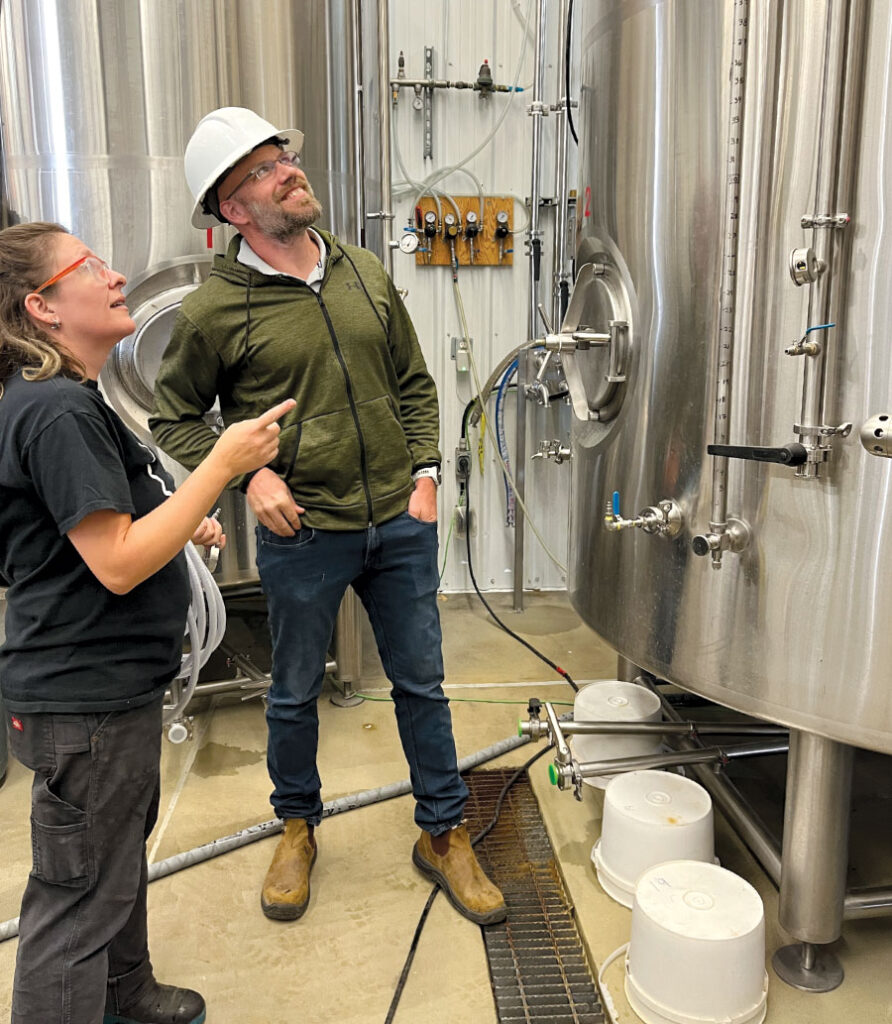
If an officer identifies a violation, they typically issue a corrective order that outlines the problem, provides recommendations for how to fix it and sets a deadline for compliance. If the issue isn’t resolved by the time of a follow-up inspection, the officer may issue a warning letter and even impose a financial penalty.
However, for high-risk violations that have the potential to cause serious injury or fatality, officers may immediately issue a financial penalty along with corrective orders. An example of a high-risk violation would be someone entering a confined space without proper protective measures in place.
How health and safety affect the bottom line
Health and safety measures not only keep workers safe, but also impact a business’s bottom line. Brewery and winery owners in British Columbia are required to pay insurance premiums to WorkSafeBC. This insurance protects them from lawsuits related to worker compensation for work-related injuries and illnesses.
In 2024, the industry base premium rate for breweries was $1.38 per $100 of payroll. In 2025, this rate is forecasted to be $1.36 per $100 of payroll. This projected decrease in the premium rate is good news, as it indicates that claims from the brewing industry are expected to decline.
If most breweries maintain good health and safety programs, and in turn have fewer claims, this benefits the entire industry by decreasing the industry’s base insurance premium rate.
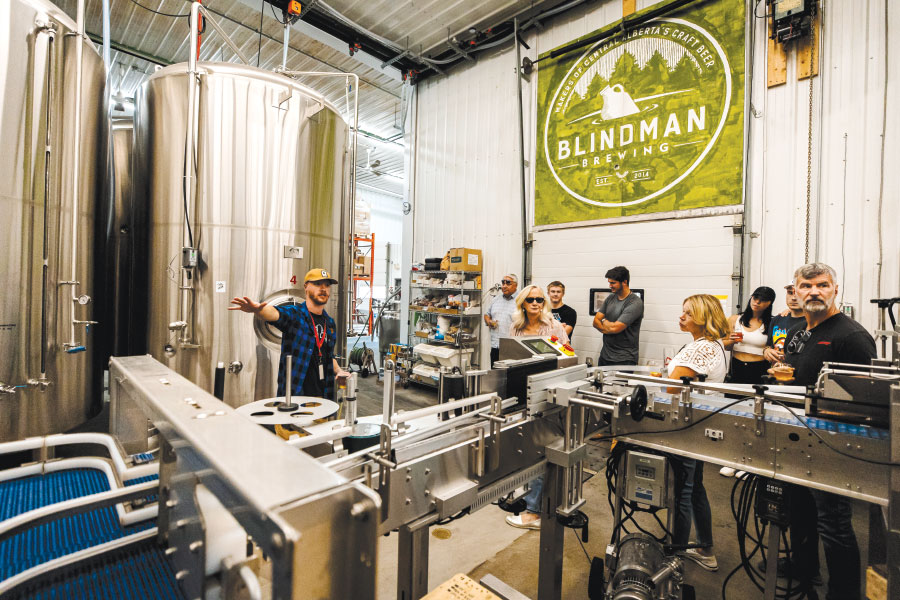
However, an employer’s individual health and safety record also impacts the premiums they pay. An individual brewery that has injury claims above the average for the sector will pay insurance premiums that are higher than the base rate. There is no maximum on how high an employer insurance premium can be increased. Conversely, if a brewery has claims that are below the industry average, they will receive a discount on their premiums, up to 40 per cent.
Having a strong health and safety program is also a competitive advantage. Research shows businesses that make health and safety core to their culture benefit from improved worker retention. In addition to paying lower premiums, they are better able to attract talent who want to work with organizations that listen and are focused on their well-being.
Focus on risk management basics
During inspections, WorkSafeBC officers first examine what is causing injuries in the workplace. Then they take a general look at the facility and ask questions to determine what health and safety measures are in place. An example of a question the officer would ask is whether the facility has a joint health and safety committee or worker representative. Officers will also look at what programs and processes are in place to protect workers from confined spaces, and employer investigations into incidents.
Health and safety measures not only keep workers safe, but also impact a business’s bottom line.
Mean says that her officers emphasize risk management, which refers to the systems that an employer should automatically have in place to control or eliminate risks.
Most common injuries in alcohol manufacturing
One of the most common injury claims Mean sees is overexertion, which occurs when a person undertakes repetitive actions such as lifting grain bags. Being struck by something like a forklift or falling load, falling from a height and falling from the same level (tripping) are also common injuries. Since most craft breweries operate in small, congested spaces, hoses and other equipment make for common tripping hazards.
Brewers, winemakers and distillers work in an environment where they have easy access to alcohol. For this reason, Dave Vander Plaat, co-founder of Blindman Brewing in Lacombe, Alta., has developed clear policies regarding when alcohol consumption is allowed at his brewery:
- It is the employer’s responsibility to identify workplace hazards and put controls in place to protect employees from these hazards.
- Training must be provided whenever an employee is assigned a new task or moved to a new role.
- Employers must ensure that their employees are competent at the jobs they have been given.
Required personal protective equipment (PPE)
In the hierarchy of controls – a method of identifying and ranking safeguards to protect workers from hazards – it’s well established that PPE is at the bottom. This means that PPE should be the last thing considered when looking at how to protect workers on the job. If the hazard cannot be eliminated, substituted or managed through administrative controls, then PPE must be worn.
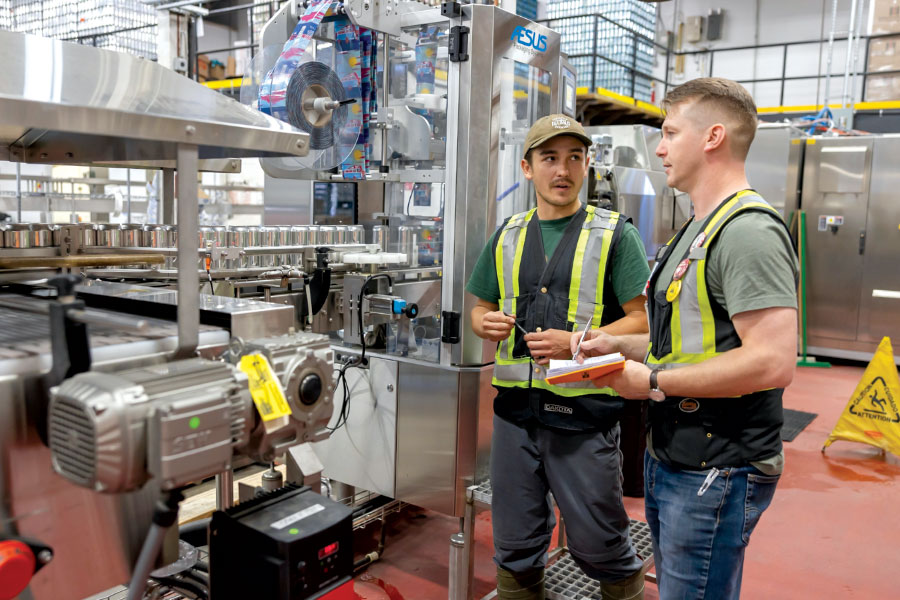
Mean notes that the appropriate PPE depends on the task at hand. If an employee is working with a hazardous chemical, such as caustic soda, they should consult the accompanying safety data sheet to determine the appropriate PPE.
At Blindman Brewing, which employs 22 full-time staff and 12 part-time staff, they have clear guidelines on what PPE is needed to perform each task. Brewers are required to wear long pants to avoid direct skin contact with chemicals and hot surfaces. Insulated rubber gloves are also required for certain tasks, and hearing protection is required on days when they centrifuge their beer for filtration.
Expanding mental health policies
As the importance of psychological health and safety becomes more widely discussed, Mean says that managing psychological health and safety in the workplace is as important as managing physical health and safety. A psychologically healthy and safe workplace prevents harm to workers’ mental health and promotes mental well-being. While many factors outside the workplace can affect mental health, it is an employer’s responsibility to address the factors that are within the control, responsibility or influence of the workplace.
Currently, WorkSafeBC requires employers to have bullying and harassment policies. While wellness plans for employees are recommended, they are not mandatory.
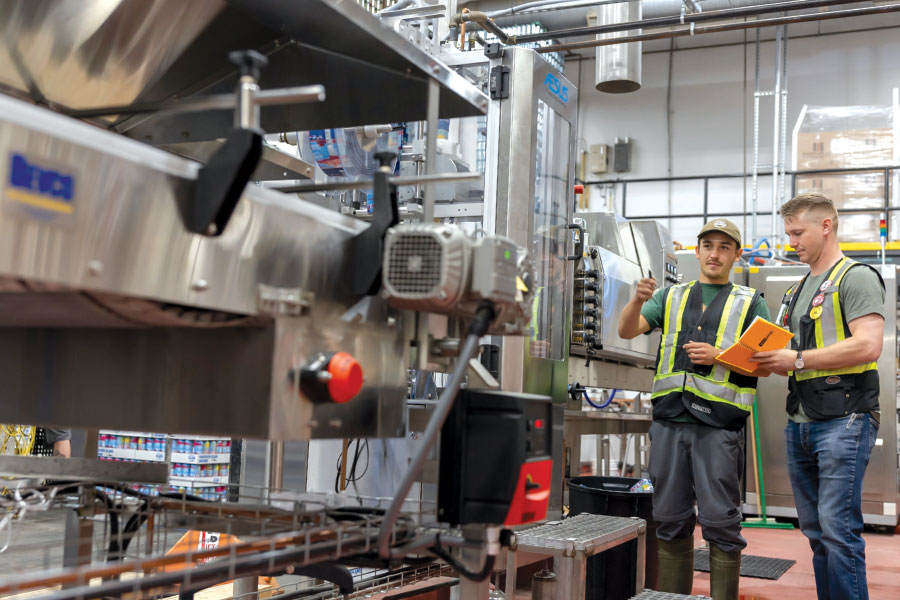
Mean says that if a worker informs their employer about a mental health concern that affects their job performance, the employer must quickly address it. If the worker gets injured as a result of being psychologically unwell, WorkSafeBC could deem that the employer provided unsafe working conditions that placed the worker in harm’s way.
Fostering a strong health and safety culture
Employers should endeavour to develop a work and safety culture where people feel comfortable reporting issues. Ultimately, creating this environment starts at the top, with management. “We make rules. We have to, but safety doesn’t come because of rules, it comes because of good safety culture,” said Plaat.
He finds that management gets a lot of traction just by constantly talking about safety. Safety becomes ingrained in employees’ minds and is simply a part of the way they operate there.
If the hazard cannot be eliminated, substituted or managed through administrative controls, then PPE must be worn.
Plaat highlights two key factors that encourage his employees to report issues: First, reporting issues must be quick and easy. At Blindman Brewing, they have “two-minute, near miss” cards. Employees fill these cards out when they observe a safety issue or hazard in the brewery. These cards take less than two minutes to fill out and drop in a box. Employees don’t even have to write their names on the cards.
Second, reporting issues should never be a blame game.
“It has to be a culture of ‘we are all in this together,’ and ‘we’re trying to make things safe for everybody here.’ We don’t want to place blame or find someone to find fault with,” said Plaat.
Resources
WorkSafeBC provides a variety of industry-specific guidelines for alcoholic beverage production facilities. They also have a Prevention Information line, where employers and workers can call for answers to their health and safety questions. People can also sign up on their website to get the latest news and policy updates.


